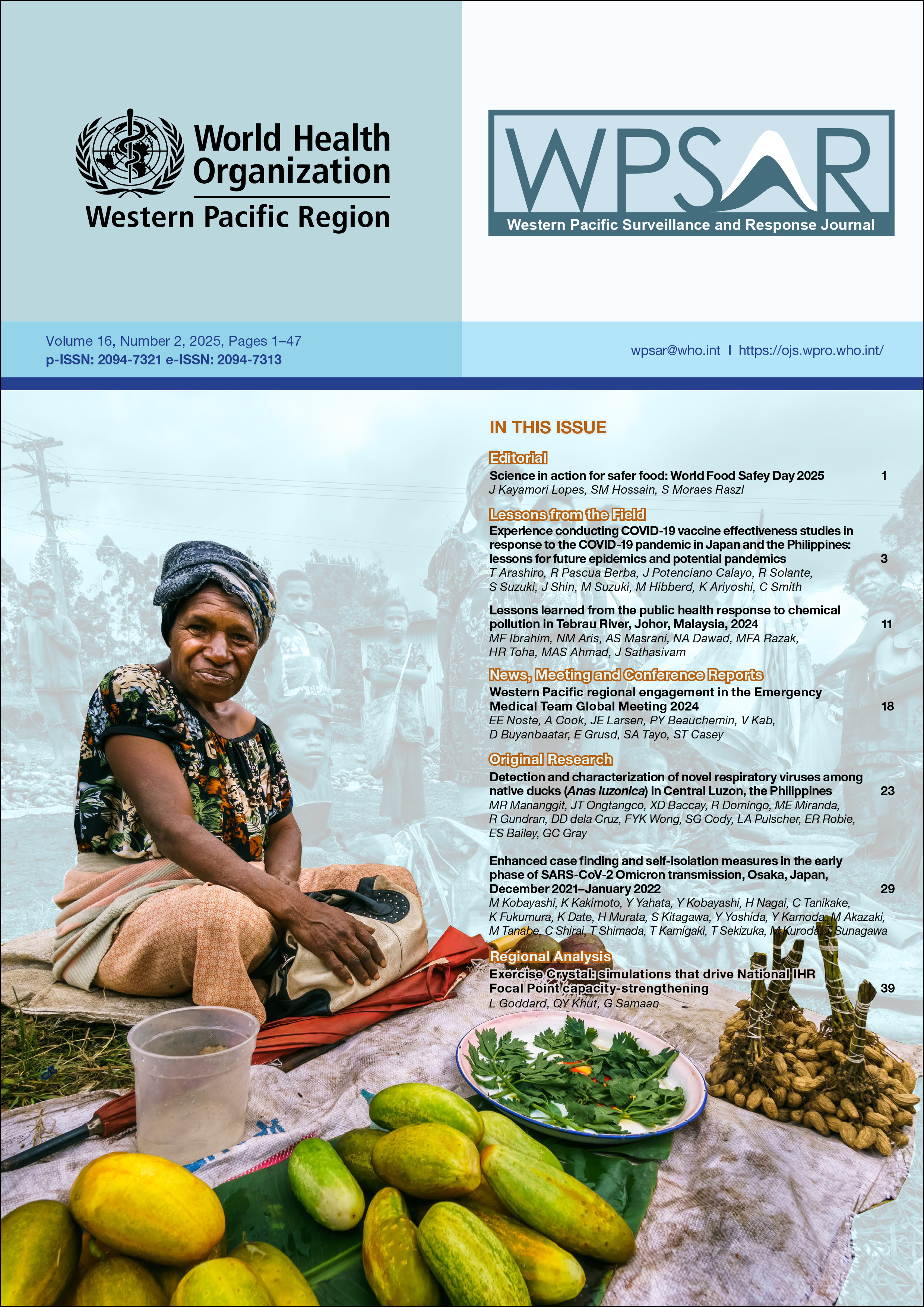Detection and characterization of novel respiratory viruses among native ducks (Anas luzonica) in Central Luzon, the Philippines
DOI:
https://doi.org/10.5365/wpsar.2025.16.2.1124Keywords:
influenza, avian influenza, ducks, viral zoonotic disease, PhilippinesAbstract
Objective: This cross-sectional, prospective surveillance study sought to determine the prevalence of novel respiratory viruses among domestic ducks in Central Luzon that are known to have frequent contact with wild avian species. Such contact may lead to novel virus spillover events that may harm domestic poultry as well as humans.
Methods: From March 2019 to January 2020, cross-sectional and prospective surveillance for viruses among domestic ducks (Anas luzonica) was conducted by periodically collecting oropharyngeal swabs from ducks on 54 farms across three municipalities within Central Luzon (Region III). A flock of 30 sentinel domestic ducks was also sampled four times after being confined in the Candaba swamp. The resultant 1740 swab samples were pooled (5 samples/pool, 348 pools) by site and screened with molecular assays for respiratory viruses from multiple viral families.
Results: Two farms yielded samples positive for avian influenza virus in Candaba, where adolescent ducks are known to freely mix with wild birds as they graze in rice fields. Overall, the prevalence of avian influenza virus was 2.3% (8/348 pools). Sequencing revealed three pools with highly pathogenic avian influenza H5N6, one with low pathogenicity H5N8, and one with H5 with an unspecified neuraminidase. All the pooled specimens tested were negative for influenza C, adenoviruses, coronaviruses and enteroviruses.
Discussion: Although this study had several limitations, it found supportive evidence that domestic ducks are acquiring avian influenza viruses from wild bird species. These findings underscore recommendations that duck farmers should seek to prevent domestic ducks from mixing with wild avian species.

